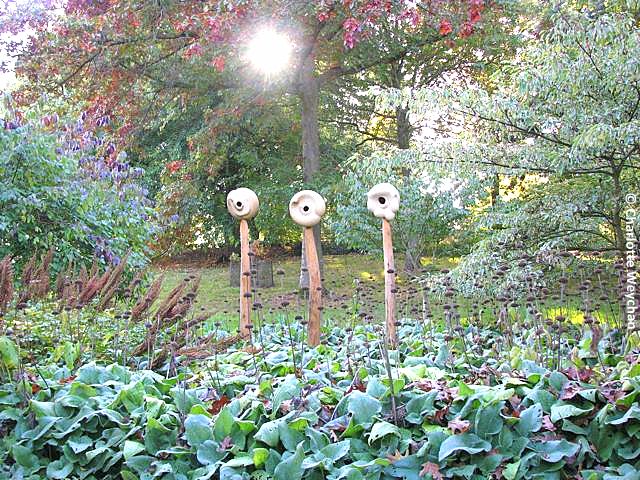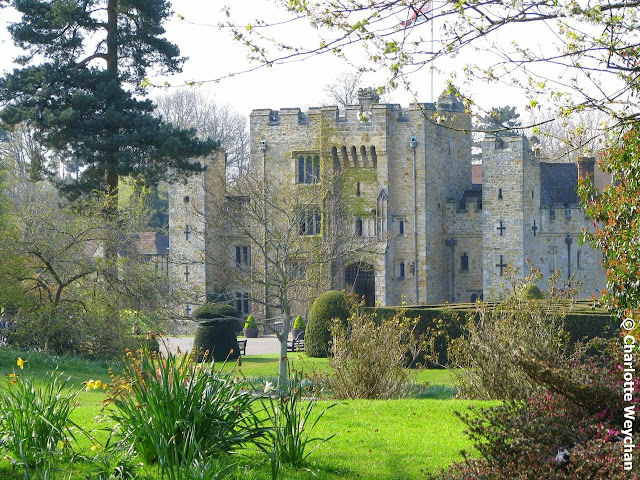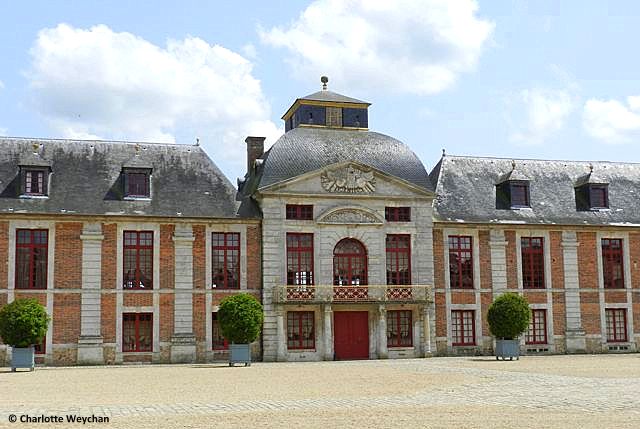![]() |
Annual membership of the National Trust, Royal Horticultural Society and Historic Houses Association gives
you free entry to some of the greatest properties and gardens in Britain (Hever Castle above is part of the HHA) |
It's just 30 days until Christmas and if you're racking your brains about gifts for gardeners, I've put together a collection of ideas here that will bring happiness to those green fingered members of the family for a whole year - guaranteed to inspire them and get them out and about in the UK. And there's even some ideas for overseas visitors planning to make a pilgrimage to Britain in 2013 to see our glorious gardens. I hope some of these ideas will inspire readers - I know that I'd be delighted to receive any of these gifts for Christmas!
![]() |
| Nymans in West Sussex is one of the National Trust's most visited gardens in the southeast |
Garden visiting doesn't come cheap any more and one of the most economical ways of getting to see a really good sample of our wonderful gardens is to join one of our big organisations for an annual fee - you need only visit five or six gardens in a year and the annual fee has already paid for itself and if, like me, you spend a major part of your life visiting gardens around the country, these memberships are invaluable! All subscriptions are available on line, and I've included links to each of the featured organisations.
![]() |
| Sheffield Park is one of the most visited National Trust gardens in England, famous for its autumn colours |
The National Trust has a particularly impressive portfolio of gardens all over the country, and owns some of the most visited garden properties in England including Hidcote Manor, Mottisfont Abbey, Nymans, Sheffield Park and Sissinghurst in the southeast. Elsewhere you've got Drogo, Scotney and Sizergh, if it's castles you like, and some of the finest country houses nationwide. Many of the gardens remain open throughout the year and are great for winter garden walks.
![]() |
| Hidcote Manor in Gloucestershire is one of the most visited NT gardens in Britain |
Annual membership of the National Trust is just £39.75 (direct debit) which represents remarkable value when you consider that a single visit to Hidcote is £9.05 while entry to Sissinghurst costs £10.40. Of particular interest to foreign visitors will be the Touring Pass, priced at just £23 for seven days and £28 for 14 days (2012 prices), which gives unlimited entry to all properties for the duration of the pass. Further details are available here. ![]() |
| RHS Wisley - flagship of the Royal Horticultural Society is renowned for its orchid displays in winter |
A subscription to the Royal Horticultural Society (RHS) is another worthwhile Christmas gift, because £38.25 (payment by direct debit) or £51 for a gift subscription, gives you unlimited access to its four gardens nationwide plus a family guest - Wisley near London, Hyde Hall in Essex, Rosemoor in Devon and Harlow Carr in Yorkshire - plus its monthly magazine "The Garden", which is filled with useful information about plants, gardens to visit and much, much more. Members also receive an annual directory of all partner gardens, with visiting information. ![]() |
| All the RHS gardens are open throughout the year - there is always something on show, regardless of season |
Other benefits of membership include free entry to some 80 partner gardens around the country throughout the year and a further 60 partner properties at certain times of the year, plus the chance to go to what is possibly considered as one of the world's great garden shows - RHS Chelsea - where savings of up to 25% are available to members on tickets. Other notable shows include Hampton Court and Tatton Park.
![]() |
| Houghton Lodge in Hampshire is an HHA member - spectacular in springtime when the bulbs start flowering |
And don't forget the Historic Houses Association - another organisation that has some fine garden properties nationwide. Membership is just £41.50 for a single person and £67 for a double membership and covers entry to both houses and gardens. Also available to overseas visitors at the same rates. Property members of the HHA are extremely diverse and include many properties where the owning families are still in residence, so their gardens are often more personal than gardens operated by the National Trust. ![]() |
| Great Dixter, former home of garden guru, Christopher Lloyd is free to HHA members |
Properties are spread nationwide and include many unique gardens including Great Dixter, former home of gardening guru Christopher Lloyd, Gresgarth Hall, home of famous garden designer, Arabella Lennox-Boyd, Iford Manor, former home of Harold Peto and some of the best castles in Britain including Hever in Kent (top) as well as a selection of abbeys, ancient manor houses and major garden members including West Dean. All are free to members and the HHA has a guide to all properties which is sent out annually with membership cards.
![]() |
| The winter garden at the Sir Harold Hillier Gardens in Hampshire is one of the best in Europe |
I live in the south and belong to many gardens that have properties within a 100-mile radius of my home, so another particularly worthwhile membership for anyone on the south coast is the Sir Harold Hillier Gardens, because annual membership of just £29.95 covers not just the spectacular gardens at Romsey, but also gives free entry to London's Royal Botanic Gardens at Kew, the Birmingham Botanic Gardens, the National Botanic Garden of Wales and Wakehurst Place - with Kew priced at £16 a visit for non members, you can't really get much better value than this. Happy Christmas shopping to all!















































































































































